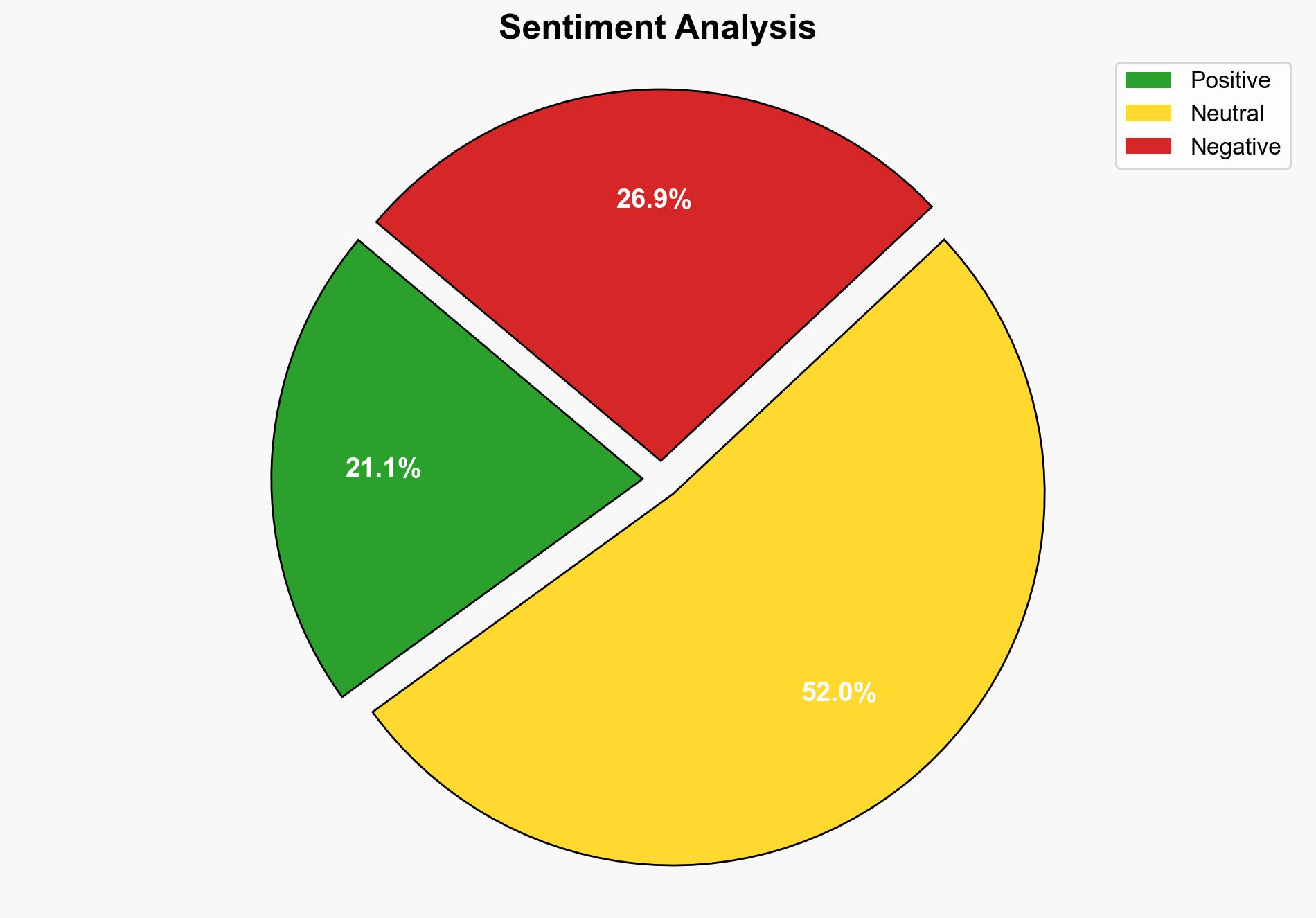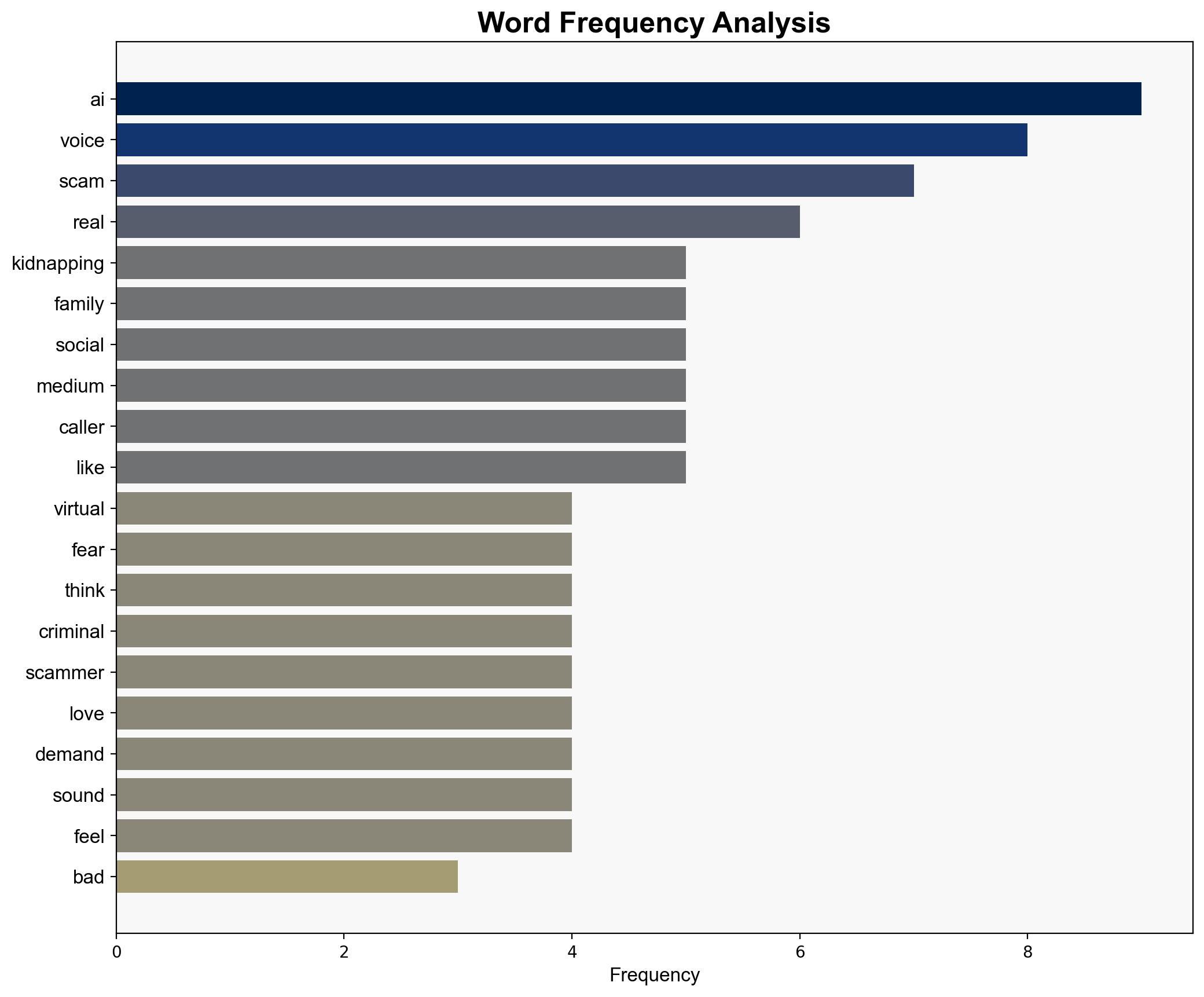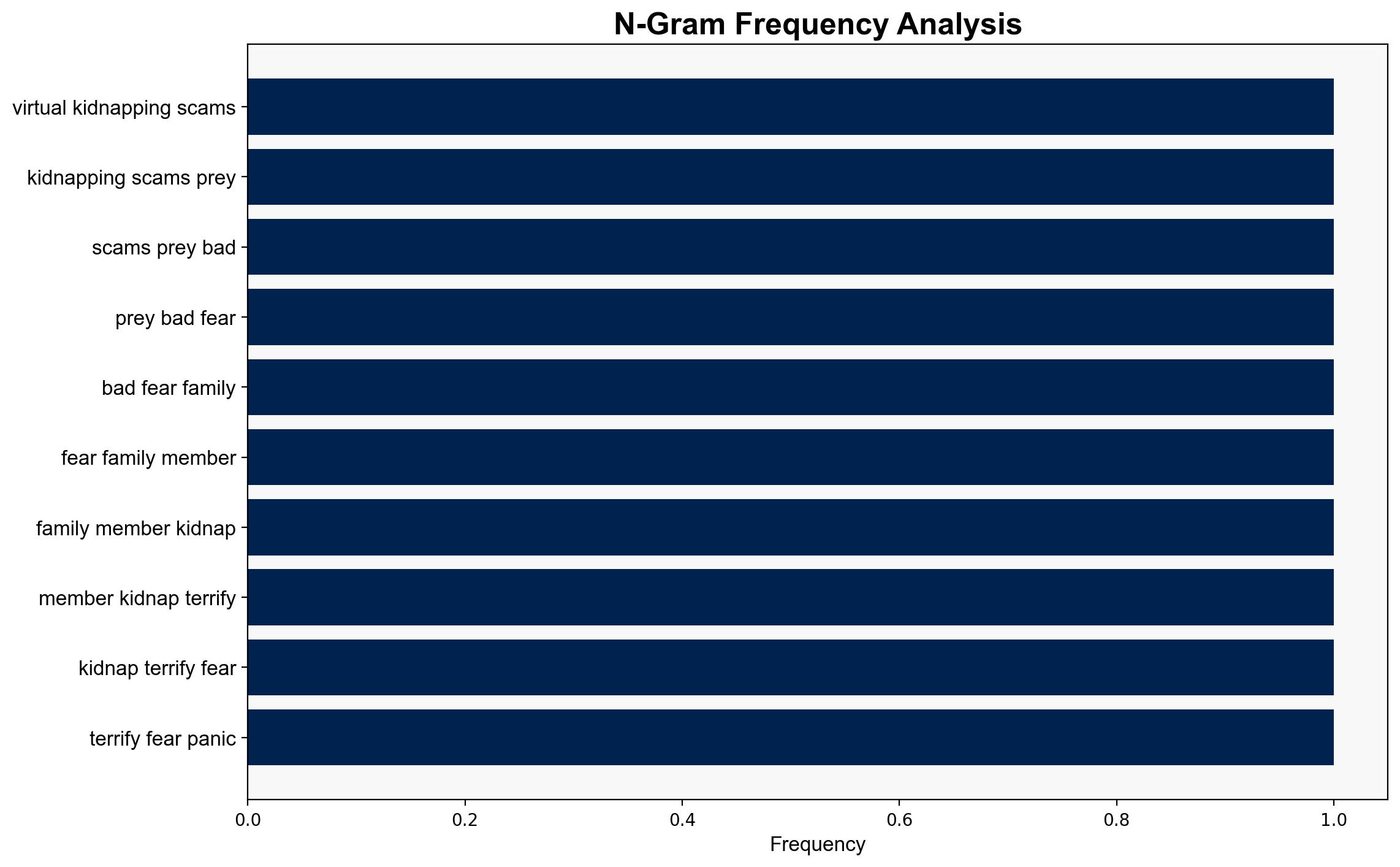Virtual kidnapping scams prey on our worst fears – Help Net Security
Published on: 2025-06-16
Intelligence Report: Virtual Kidnapping Scams Prey on Our Worst Fears – Help Net Security
1. BLUF (Bottom Line Up Front)
Virtual kidnapping scams are increasingly leveraging advanced technologies, such as AI-generated voices and social media data, to create convincing scenarios that exploit victims’ fears. These scams pose a significant threat due to their emotional manipulation tactics and the rapid response they demand from victims. Immediate action is required to enhance public awareness and implement protective measures against these sophisticated extortion methods.
2. Detailed Analysis
The following structured analytic techniques have been applied to ensure methodological consistency:
Cognitive Bias Stress Test
Potential biases in assessing the threat of virtual kidnapping scams have been identified and addressed. The emotional impact of these scams can skew perceptions, necessitating objective analysis to avoid overestimation or underestimation of their prevalence and impact.
Bayesian Scenario Modeling
Probabilistic forecasting suggests a high likelihood of increased scam attempts as AI technology becomes more accessible. The trajectory indicates potential escalation in both frequency and sophistication.
Network Influence Mapping
Analysis reveals that scammers exploit social media networks to gather personal information, enhancing the credibility of their threats. Understanding these networks is crucial for developing countermeasures.
3. Implications and Strategic Risks
The rise of virtual kidnapping scams highlights vulnerabilities in digital communication and personal data security. The emotional and financial impact on victims can have broader societal implications, including decreased trust in digital interactions and increased demand for cybersecurity solutions. Cross-domain risks include potential exploitation by organized crime groups and the use of similar tactics in other forms of cybercrime.
4. Recommendations and Outlook
- Enhance public awareness campaigns to educate individuals on the risks and signs of virtual kidnapping scams.
- Encourage the use of privacy settings on social media to limit the availability of personal information.
- Develop and deploy AI detection tools to identify and prevent the use of deepfake technologies in scams.
- Scenario-based projections:
- Best case: Increased awareness and technological solutions significantly reduce scam success rates.
- Worst case: Scammers continue to innovate, leading to widespread financial and emotional harm.
- Most likely: Gradual improvement in detection and prevention, with ongoing challenges as technology evolves.
5. Key Individuals and Entities
Arun Shrestha, CEO of BeyondID, has highlighted the ease with which AI tools can be used to create convincing fake voice recordings, emphasizing the need for vigilance and protective measures.
6. Thematic Tags
national security threats, cybersecurity, counter-terrorism, regional focus





